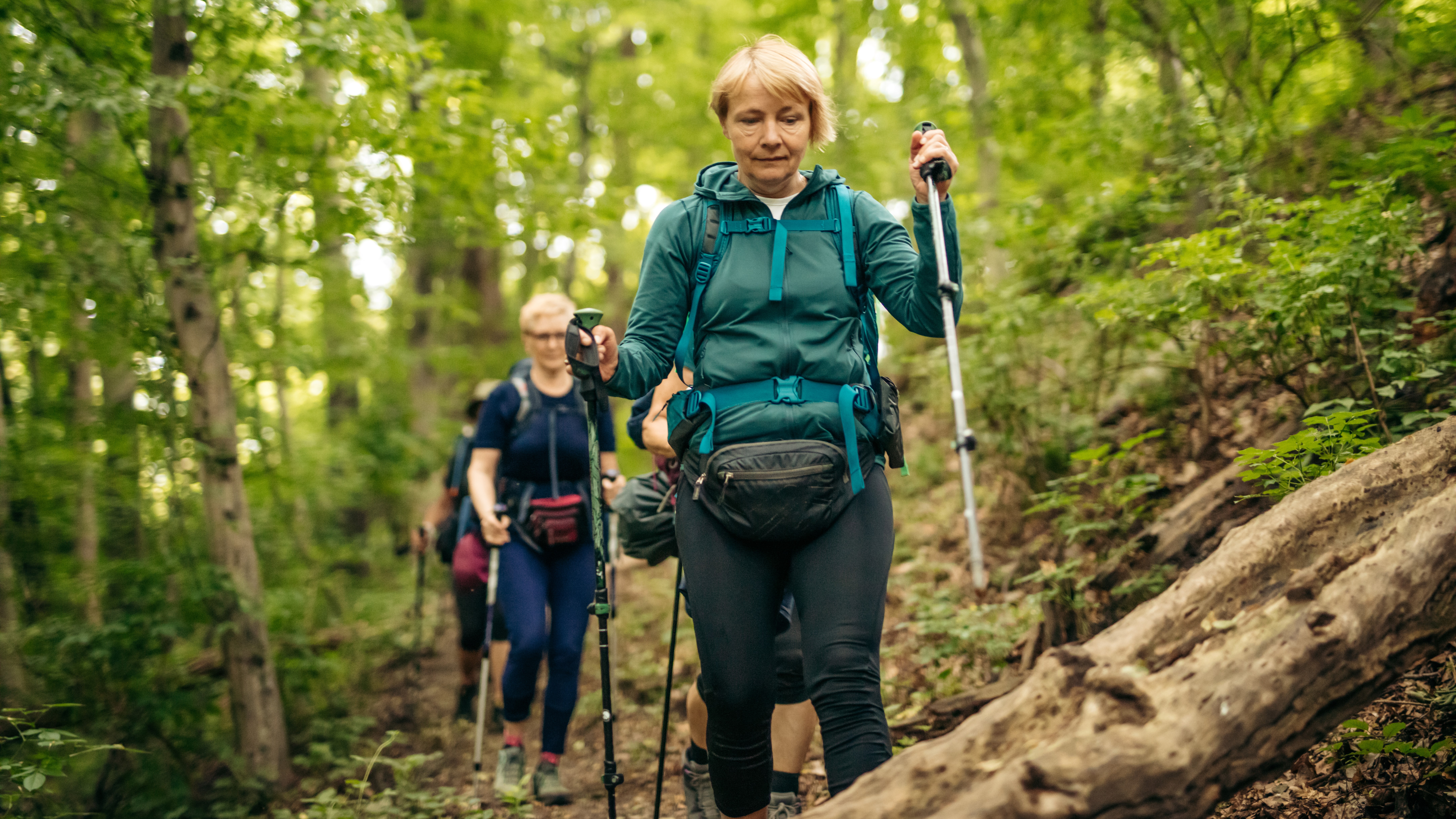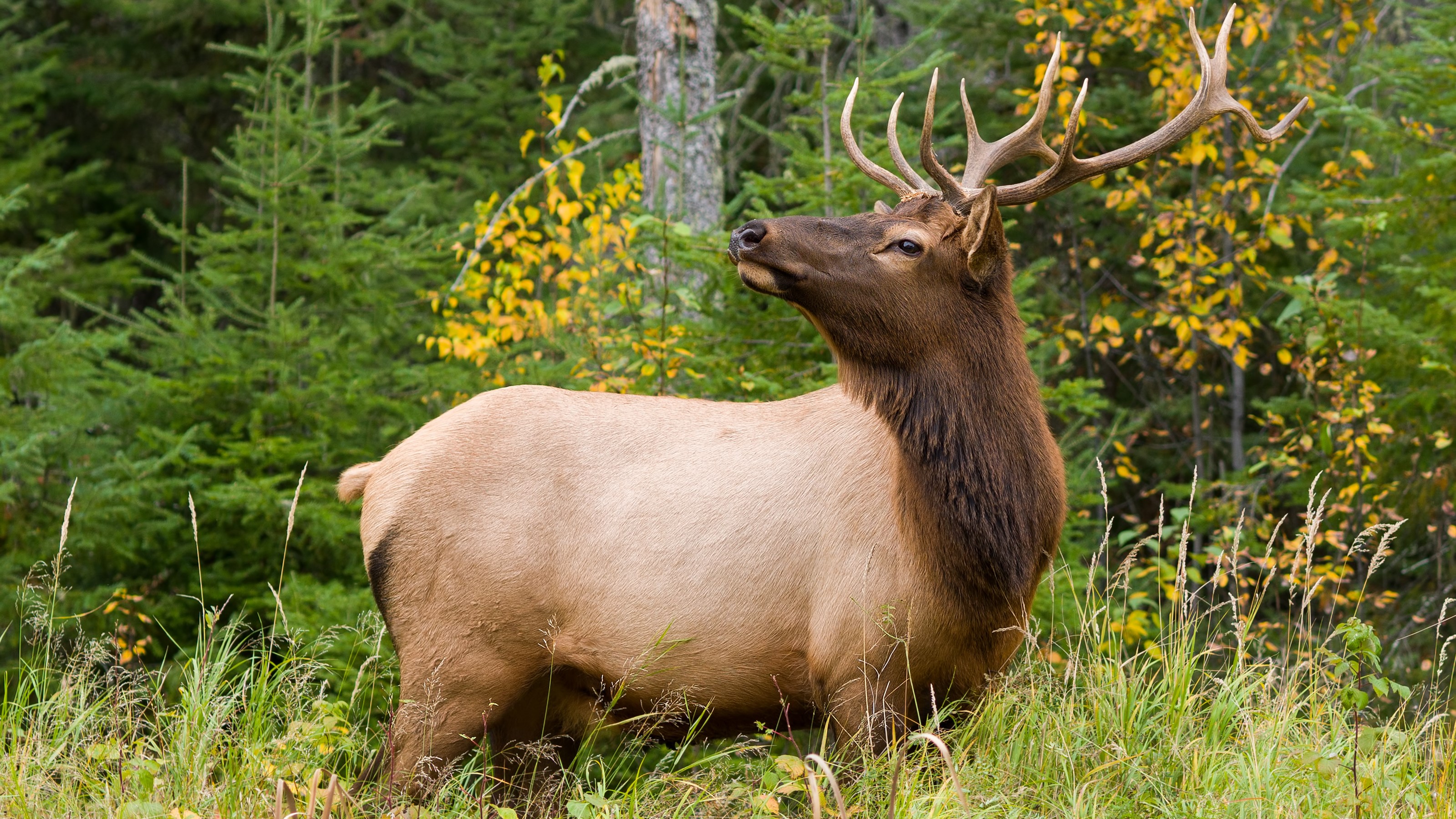
If you like to don your best hiking boots and hit the trails, hopefully you do so with the principles of Leave No Trace in mind and carry out everything you bring in (even those orange peels). But if you tend to travel the trails in large, chatty groups, there's a good chance you're doing more damage than you realize, according to new research.
A study published in the new issue of Current Biology looked at the effects of noise pollution on wildlife and found that the vocal sounds of large groups of hikers and bikers have the biggest impact on animal behavior. It also observed that our footprint lasts for far longer than we spend on the trail.
Though other studies have been performed on the subject of how recreation affects wildlife, finding for example that it can impact reproduction rates, this study is the first to examine what role noise plays, as well as the impact of group size and recreation type.
To conduct their research, wildlife biologists set up a series of motion-triggered speakers and cameras in trees in Bridger-Teton National Forest, which comprises a large part of the Greater Yellowstone Ecosystem in Wyoming. The National Forest is home to a wide array of large mammals, including bears, wolves, bison, elk and coyote and hosts two Wilderness Study Areas. When animals entered the range of the devices, the speaker started playing recreational sounds from a distance of 65 feet (20 meters).

From the video footage captured, the authors of the study observed that wildlife were 3.1 – 4.7 times more likely to flee the area when recreational noise was present and remained vigilant for up to three times longer compared with both no noise and when they were exposed to non-vocal ambient sounds.
"Our experimental playback approach allowed us to decisively isolate human-created noise as a key driver of animal response to recreationists," write the authors.
"As outdoor recreation continues to increase in popularity and geographic extent, noise from recreation may result in degraded or indirect wildlife habitat loss."
While wildlife didn't differentiate between noise caused by hikers versus that by bikers, it was vocal noise from larger groups that caused the highest probability of an animal fleeing. The researchers also observed that elk are the most sensitive species to recreational sounds, while large carnivores such as grizzly bears were the least affected.
Furthermore, the authors noted that a week after their tests, wildlife abundance remained 1.5 times lower, suggesting that the impact of a single recreational visit far outlasts the time that you spend on the trail. As hiking and other outdoor activities continue to surge in popularity, the authors warn that there's a risk of losing wildlife habitats without intervention.

What do the findings mean for hikers?
Wildlife is hard-wired to move away when it detects predators and this isn't a bad thing. It's part of an animal's survival instinct and reduces the instances of human-wildlife interactions. However, the study suggests that too much recreational noise, in particular vocal noise, can result in changes to the ecosystem since the removal of large mammals disrupts the food chain and changes vegetation. It can also force animals to flee into dangerous areas, such as onto busy roads.
Maintaining awareness of how our behavior affects our surroundings on the trail is a good place to start. In remote areas of the backcountry, talking less and traveling in smaller groups may help to preserve wildlife areas, while there's an argument for sticking to more popular trails such as those found in National Parks and letting the wilderness stay wild. If you are organizing large group hikes, stick to busier areas and encourage people to talk less in wildlife areas.
Of course, in some areas you're advised to travel in larger groups and talk loudly to help ward off grizzly bear attacks, though the study also shows that this may not be as effective as previously thought since grizzly bears are the least sensitive to vocal noise.
The authors of the study conclude that this data can help land managers make decisions regarding group sizes, trail closures and activity zoning. As hikers, we can do our part by chatting less on the trail and enjoying the ambient sounds of nature, and sticking to the trail whenever possible to minimize our impact.







